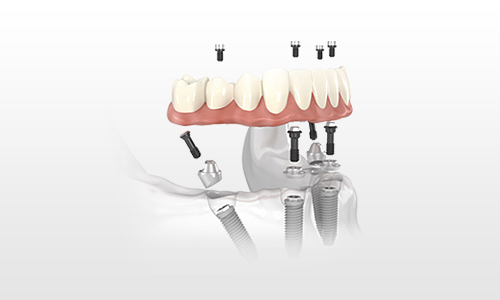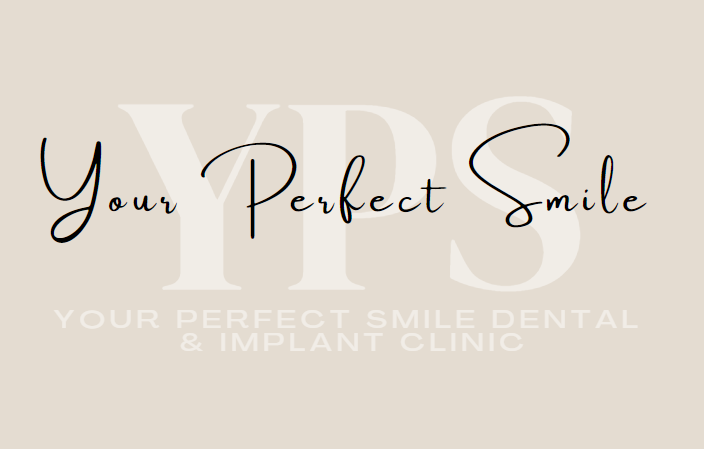

Cosmetic Dental Bonding: A Quick FAQ
What is Cosmetic Dental Bonding?
Cosmetic Dental Bonding involves applying a tooth-colored composite resin to damaged or imperfect teeth, sculpting it to the perfect shape, and then hardening it with a special light. This procedure can dramatically improve the appearance of your teeth, making it a popular choice for cosmetic dental enhancements.
Who is a Good Candidate for Dental Bonding?
Ideal candidates are those looking to repair minor dental imperfections such as chips, cracks, gaps between teeth, or discoloration. It’s also suitable for patients seeking an affordable and less invasive alternative to veneers or crowns.
How Long Does the Procedure Take?
Typically, dental bonding procedures can be completed in one visit to the dentist, usually lasting between 30 to 60 minutes per tooth. The duration may vary depending on the extent of the repair needed.
Is the Procedure Painful?
Cosmetic dental bonding is generally painless and doesn’t require anesthesia unless it’s being used to fill a decayed tooth. Patients can expect a comfortable experience with minimal discomfort. However, for your increased comfort, you can easily request an anesthetic.
How Long Does Dental Bonding Last?
With proper care, dental bonding can last from 3 to 10 years before needing any touch-ups or replacements. Its longevity depends on the bonding’s location on your teeth and your oral hygiene practices. If your bonding is on incisal edges and you are grinding your teeth or you are not careful with the hard food it can chip a lot sooner.
How to Care for Bonded Teeth?
Caring for bonded teeth is simple. Practice good oral hygiene by brushing twice daily, flossing regularly, and visiting your dentist for routine check-ups. Avoid habits that can damage your teeth, like chewing on hard objects or ice. Avoid dark food and drinks which can stain the bonding.
Can Dental Bonding Be Used to Lengthen Teeth?
Yes, dental bonding can be effectively used to lengthen teeth that may appear too short due to wear or genetics. By adding resin material to the edge of the tooth, it can be shaped to a more desirable length, enhancing your smile’s overall appearance.
Does Dental Bonding Stain Over Time?
Like natural teeth, the resin used in dental bonding can stain over time, especially with exposure to substances like coffee, tea, red wine, and tobacco. However, bonding material might stain more easily than natural teeth. Regular cleanings and avoiding stain-causing foods and drinks can help maintain the brightness of bonded teeth.
Can Bonded Teeth Be Whitened?
The resin material used in dental bonding does not respond to traditional teeth whitening treatments. If you’re considering whitening your teeth, it’s recommended to do so before having dental bonding done. This way, the bonding material can be matched to your newly whitened teeth.
Is Dental Bonding Reversible?
Yes, one of the advantages of dental bonding is that it is a reversible treatment. Since the procedure involves minimal alteration to the original tooth structure, it can be removed or replaced without permanent changes to your teeth.
How Does Dental Bonding Compare to Veneers?
Dental bonding and veneers both aim to improve the appearance of your teeth but differ in material, procedure, longevity, and cost. Bonding is less expensive and can be done in a single visit using a resin that is applied directly to the tooth. Veneers are made from porcelain, offer a longer-lasting result, and require at least two visits. The choice between the two depends on your specific dental needs, budget, and desired outcome.
What Should I Do if My Bonded Tooth Chips or Breaks?
If your bonded tooth chips or breaks, contact your dentist as soon as possible. The bonding can often be easily repaired or replaced, depending on the extent of the damage. Avoiding hard foods and not using your teeth as tools can help prevent such incidents.
Conclusion:
Cosmetic dental bonding offers a versatile and accessible solution for enhancing your smile, with the added benefits of being quick, affordable, and minimally invasive. Whether you’re looking to fix a minor imperfection or seeking an alternative to more extensive cosmetic procedures, dental bonding might be the ideal choice for you. Always consult with your dentist to ensure the best care and outcome for your smile.
If you want to know more and if you are suitable for the treatment book an appointment with our Dr. Agnieszka, for a personalized assessment. Dr. Agnieszka will provide you with the advice tailored to your unique dental needs and help you achieve the beautiful smile you’ve always desired. Contact us today to take the first step towards enhancing your smile with cosmetic dental bonding.

What is a Quick Straight Teeth System?
Appearance
Quick Straight Teeth brackets and wires are all tooth coloured, and designed to blend in and appear nearly invisible in the mouth, giving you the ability to get straight teeth quickly, but without ugly, bulky braces. Most people will be unable to tell you are wearing Quick Straight Teeth™ invisible braces at all.
Time
Getting a beautiful straight smile is fast! Treatments for teeth straightening take between 4 and 24 weeks depending on complexity. Quick Straight Teeth™ clear braces concentrate on only the front teeth and therefore take less time than conventional full orthodontics.
Comfort
Our adult braces have been designed to ensure optimum wearability and comfort for patients. Your clear braces will not only look discreet but feel extremely comfortable. With most of our products coming from 3M, you can rest assured that we are the gold standard in orthodontics.
Braces cost
Due to low laboratory fees and quick treatment times, Quick Straight Teeth™ invisible braces are one of the most cost-effective adult brace systems. This means you can get affordable clear braces with no compromise on quality for straightening teeth. The cost of clear braces made affordable!
If you want to know more about prices click here
How to start
It’s Simple. Just give us a shout and we arrange a consultation
Call us on 01479 812 846
Send us FB message/book online or via Live chat on our web site
or sent an email Kerry.aviemore@yourperfectsmile.co.uk


Cosmetic dentistry focuses on improving the appearance of your teeth, mouth, and smile. While traditional dentistry addresses the health of your teeth and gums, cosmetic procedures are elective, and aimed at enhancing aesthetic appeal. Here’s an overview of what cosmetic dentistry covers:
1. Teeth Whitening
Also known as teeth bleaching, this procedure can brighten and whiten your teeth from discoloration and staining. It’s one of the simplest and least expensive ways to improve your smile.
2. Dental Veneers
Veneers are thin, custom-made shells of tooth-colored porcelain or resin that cover the front surface of the teeth. They can fix chips, cracks, misshapen teeth, and severe discoloration.
3. Dental Bonding
In this procedure, tooth-colored, durable plastic material is applied and hardened with a light, which ultimately “bonds” the material to the tooth. Dental bonding can repair decayed, chipped, cracked, or misshapen teeth.
4. Dental Crown (Cap)
A crown fits over and replaces the entire decayed or damaged tooth above the gum line, restoring its shape, size, strength, and appearance. Crowns prevent a weak tooth from breaking or holding a cracked tooth together.
5. Inlays and Onlays
Also known as indirect fillings, they are made from gold, porcelain, or composite materials and fill decayed or damaged teeth. Inlays and onlays are created in a dental laboratory and molded into place during a visit.
6. Dental Implants
Implants are titanium replacement tooth roots inserted into the bone socket of the missing tooth. As the jawbone heals, it grows around the implanted metal post, anchoring it securely in the jaw and providing a foundation for a replacement tooth.
7. Orthodontic Treatment
Although not traditionally considered cosmetic, orthodontic treatments can be used for aesthetic purposes, such as braces and Invisalign, to straighten teeth and improve the appearance of one’s smile.
8. Cosmetic Dentures
Cosmetic dentures are a modern solution designed not only to replace missing teeth but also to improve the appearance of your smile and face. Unlike traditional dentures, which can look unnatural or fit poorly, cosmetic dentures are customized to match the shape, color, and size of your natural teeth and facial structure, providing a more natural and attractive appearance.
Benefits of Cosmetic Dentistry
- Improved Appearance: Cosmetic dentistry can enhance your smile, making you feel more confident.
- Boosted Self-Confidence: With a better smile, you may feel more confident in your personal and professional life.
- Enhanced Oral Health: Some cosmetic dentistry procedures can improve your oral health alongside the appearance of your teeth.
- Long-Lasting Effects: Many cosmetic dentistry procedures have long-lasting results, reducing the need for ongoing treatment
Conclusion
Cosmetic dentistry offers a wide range of options for anyone looking to improve their smile. Whether it’s whitening your teeth, fixing chips and cracks, or even replacing missing teeth, there’s a cosmetic dental procedure that can meet your needs. If you’re considering cosmetic dentistry, consult with a qualified cosmetic dentist to discuss your options and what might be best for your situation.

What is tooth whitening?
Teeth whitening is a process where the tooth discolouration is ‘whitened’ to a lighter shade. It removes the staining agent through chemical means. It is a safe procedure when carried out under professional supervision.
Treatment results usually depend on the severity of the discolouration. Both vital (i.e. live) and non-vital teeth (e.g. tooth with root removed) can be bleached and may take several visits to complete.
How long do the results last?
By following some simple post whitening care instructions, your teeth will always be lighter than they were before. To keep your teeth looking their best, we recommend flossing, brushing twice daily, and occasional touch-ups with Zoom! Weekender or Nite White gel. These are professional formula products designed specifically to keep your teeth their brightest. They are available only through your dental professional.
Are there any side effects?
Sensitivity during the treatment may occur with some patients. The Zoom! light generates minimal heat which is the usual source of discomfort. On rare occasions, minor tingling sensations are experienced immediately after the procedure, but always dissipate. You can also ask your dentist to supply you with anti-sensitivity toothpaste for use prior to teeth whitening treatment.
What causes tooth discoloration?
There are many causes. The most common include aging and consumption of staining substances such as coffee, tea, colas, tobacco, red wine, etc. During tooth formation, consumption of tetracycline, certain antibiotics or excessive fluoride may also cause tooth discoloration.
Who may benefit from teeth whitening?
Almost anyone. However, treatment may not be as effective for some as it is for others. Your dental professional can determine if you are a viable candidate for this procedure through a thorough oral exam, including a shade assessment.
Is whitening safe?
Yes. Extensive research and clinical studies indicate that whitening teeth under the supervision of a dentist is safe. In fact, many dentists consider whitening the safest cosmetic dental procedure available. As with any tooth whitening product, Zoom! is not recommended for children under 13 years of age and pregnant or lactating women.
Which method should I use?
Teeth can discolour for various reasons. Dr Agnieszka Milbauer will recommend the most ideal method based on your oral condition after an in-office examination to establish the cause and nature of your tooth discolouration, as well as provide you with more information on the various types of whitening procedures available, duration & frequency of treatment.
When might whitening not work?
Whitening works on natural teeth. It will not work on any type of ‘false’ teeth. This includes dentures, crowns and veneers or even fillings.
What about whitening toothpaste?
There are now several whitening toothpastes you can buy. Although they do not affect the natural colour of the tooth, they are effective at removing staining and therefore improving the overall appearance of the tooth. Whitening toothpaste may also help to keep up the appearance, once teeth have been professionally whitened.

Porcelain Veneers
are a thin, custom-made layer of tooth-coloured porcelain or ceramic designed to fit over the front surface of teeth to improve the overall appearance of teeth.
They can be placed to:
- correct poorly formed or mildly mal-positioned teeth
- close gaps between teeth
- mask internal stains
- restore partially broken-down teeth
What are the advantages of porcelain veneers?
Veneers make teeth look natural and healthy. They are very thin and are held in place by a special strong bond so very little preparation of the tooth is needed.
What about alternatives?
The natural-coloured filling material can be used for minor repairs to front teeth. This is excellent where the tooth supports the filling, but may not work so well for broken tooth corners. There will always be a joint between the tooth and the filling material.
Crowns are used for teeth that need to be strengthened – either because they have broken, have been weakened by a very large filling, or have had root canal treatment.
How long will a veneer last?
Veneers should last for many years, but they can chip or break, just as your own teeth can. Small chips can be repaired, or a new veneer fitted if necessary.
How are teeth prepared for a veneer?
Some of the enamel surface of the tooth may be removed, to make sure that the veneer can be bonded permanently in place later. The amount of enamel removed is tiny and will be in most cases the same as the thickness of the veneer to be fitted, so that the tooth stays the same size. A local anaesthetic will be used to make sure that there is no discomfort. Once the tooth has been prepared, an impression will be taken. This will be given to the dental technician, along with any other information needed to make the veneer.
How long will it take?
A veneer takes at least two visits; the first to prepare the tooth and to match the shade, and the second to fit it. Before bonding it in place, your dentist will show you the veneer on your tooth to make sure you are happy with it. Bonding a porcelain veneer in place is done with a special adhesive, which holds it firmly on the tooth.
Will I need a temporary veneer between visits?
Because the preparation of the tooth is so slight you will probably not need a temporary veneer. The tooth will look very much the same after preparation but will feel slightly less smooth. In some cases when preparation had to be deeper you will be provided with temporary veneers.
What happens after the veneer is fitted?
Only minor adjustments can be made to the veneer after it is fitted. It is usually best to wait a little while to get used to it before any changes are made. We may want to check and polish it a week or so after it is fitted and to make sure that you are happy with it.
Da Vinci Veneers
What happens during the Da Vinci Porcelain Veneers™ restorative procedure?
In most cases, patients need three appointments for the entire procedure: diagnosis and treatment planning, preparation, and bonding.
Diagnosis and treatment planning
It is critical that you take an active role in smile design. Spend time in the decision-making and planning of your smile. Ask questions and understand the corrective limitations of the procedure. If necessary, have more than one consultation to feel comfortable that we understand your objectives.
Preparation of teeth
This appointment will take from one to four hours. To prepare the teeth for your da Vinci Veneers™, your teeth are lightly buffed to allow for the small added thickness of the veneer. Usually, about half a millimetre of the tooth is removed, which may require a local anaesthetic. At this appointment, a mould is taken of the teeth, which is sent to a Da Vinci certified dental lab for the fabrication of the veneers. This should take no longer than two weeks for your new smile to be created. In most cases, your dentist will fit you with a temporary smile during the fabrication of your new Da Vinci Veneers.
Bonding of your Da Vinci Veneers
This appointment will take about one or two hours. First, we place the veneers with water or glycerine on the teeth to check their fit and get a true sense of their shade or colour. While the veneers are resting on your teeth, make sure you view the aesthetic results and pay particular attention to the colour. At this point, the colour of the Da Vinci Veneers can still be adjusted with the shade of the cement to be used.
The colour cannot be altered after veneers are cemented. To apply your Da Vinci Veneers, your teeth are cleaned with specific dental cleansers to achieve a firm and permanent bond. Then special cement is sandwiched between the veneer and tooth, a visible light beam initiates the release of a catalyst to harden the cement and your new smile is in place.

What are dental implants?
Dental implants are nowadays a standard of care for teeth replacement. They are manmade substitutes for lost natural teeth. These are titanium metal rods placed into the jaw bone to support a replacement tooth. This acts like the root of a natural tooth. Implants can also be used to support fixed bridges or dentures.
Implant treatment normally has two stages. First, the implant is placed in the jaw. Then, when the gum has healed, replacement teeth are attached to the implant. In some situations it is possible for temporary teeth to be attached to an implant at the time of fitting.
Would implants be right for me?
Implants are widely used solution for replacing missing teeth. You are suitable for majority of people however first, you should decide whether implants could be right for you. Contact us to arrange an implant consultation and discussion and we will let you know the treatment options.
Are implants safe? How long will they last?
Implants are a well-established, tried-and-tested treatment. 90 per cent of modern implants last for at least 15 years.
I have some of my own teeth. Can I still have implants?
Yes. You can have any number of teeth replaced with implants – from one single tooth to a complete set.
Can implants always be used to replace missing teeth?
It depends on the state of the bone in your jaw. During your initial assesment we will be able to discussed details of implant treatment and assess the amount of bone present. If there is not enough, or if it isn’t healthy enough, it may not be possible to place implants without grafting bone into the area first.
Do implants hurt?
Placing the implants will be carried out under local anaesthetic. You will not feel any pain at the time, but you may feel some discomfort during the week following the surgery. This is usually due to having stitches in place, and the normal healing process. If you have any concerns please contact the Clinic as soon as suitable.
Can I have the new teeth straight away?
In many cases you can have your prototype of crown / tooth/ bridge or denture placed stright after implant placement. However you have to be assessed prior to implant treatment to establish if you are a candidate for this so called “immediate loading” or “Same Day Implants”. In this case your permanent teeth would be fitted on average in 3 months time.
In case that treatment would not be suitable for you the implants would need to bond (integrate) with the bone after they have been placed first. This takes at least 3 months in the lower jaw and 6 months in the upper jaw. If you are having one, two or three teeth replaced, you will have a temporary restoration in the meantime. If you have complete dentures, then you can wear them throughout the healing period once they have been adjusted after the surgery.
How long does treatment take?
A lot depends on how complicated your treatment is. During your intial assesment we will be able to give you a timetable for your treatment.
Are the implant – teeth difficult to clean?
Cleaning around the teeth attached to the implants is no more difficult than cleaning natural teeth. However, if there are any challenging areas in your case you’ll be shown methods to help.
If I had gum disease when I had my own teeth, will I get it with the teeth attached to the implants?
Yes, if you don’t care for them well enough. If you keep them clean, and don’t smoke, then you should not have any problems.
Can I take the teeth out if they are fixed to implants?
Most artificial teeth attached to implants can only be placed and removed by the dentist. However, if you have complete dentures fixed to the implants by bars, then you’ll be able to take them out for cleaning.
Do I need an implant for each missing tooth?
No, unless you’re only having a single tooth replaced. Normally, five or six implants are used to replace all the teeth in one jaw, as each implant can usually support two teeth. For a few missing teeth, two or three implants may be used.
What is Same Day Implants / Same Day Teeth?
This is a concept in which implant and prototype of your new crown/ bridge or denture will be placed during the same visit. In some complex cases like All -on – 4 it might be also possible to remove your existing teeth, place implants and prototypes of your final teeth on the same visit. This treatment requires certain criteria to be met and suitability of this treatment for you will be discussed with you during your initial assesment.
What is All – on – 4?
The All-on-4 treatment concept was developed to provide edentulous patients with an efficient and effective restoration using only four implants to support an immediately loaded full-arch prosthesis.
All-on-4 offers clinicians and their patients various clear benefits:
- Teeth fitted the same day

- Stability even in minimum bone volume
- Outstanding clinical results
- Increased efficiency of chewing
- Beautifully looking teeth

What is a denture?
A denture is an dental appliance which is worn to replace lost or missing teeth hepling to enjoy a healthy diet and smile with confidence.
A complete or full denture replaces all of the natural teeth in the upper or lower jaws.
A partial denture fills in the spaces created by lost or missing teeth and is attached to your natural teeth with metal clasps or so called precision attachments.
What is a denture made of?
The base of a denture is called a plate and can be made of acrylic (plastic) or metal. The teeth are made of acrylic and can be made to match your natural teeth. This is especially important in the case of partial dentures.
Will I be able to eat with dentures?
Eating will take a little practice. Start with soft foods cut into small pieces. Chew slowly using both sides of your mouth at the same time to prevent the denture from moving. As you become more used to your denture, add other foods until you return to your normal healthy diet.
Will dentures change how I speak?
Pronouncing certain words may require practice. Reading out loud and repeating difficult words will help you out. Over time you will get used to it, so don’t worry!
How long should I wear my dentures?
During the first few days, you may be advised to wear them for most of the time, including while you are asleep. This will allow you to adjust to your new dentures and let them settle in. After that initial period you will be advised to remove them before going to bed. This allows your gums to rest.
Must I do anything special to care for my mouth?
YES. You still need to take good care of your mouth. Every morning and evening, brush your gums, tongue and palate with a soft –bristled brush. This removes plaque and stimulates blood circulation in the mouth. It is vitally important that partial denture wearers brush their teeth thoroughly every day to prevent tooth decay and gum disease that can lead to further teeth being lost.
What is the difference between conventional and Immediate Dentures?
Conventional dentures are made and inserted after teeth have been removed and the tissues have healed.
Immediate Dentures are inserted immediately after teeth have been removed. To do this, the dentist takes impressions of your mouth/gums during a first visit
An advantage of Immediate Dentures is that you do not have to be without teeth during the healing period. However, bone and gums shrink over time, especially during the first six months after teeth have been removed. When gums shrink, Immediate Dentures will require relining or even replacing to fit properly.
What will dentures feel like?
New dentures may feel a little awkward or even uncomfortable for a few weeks until you become used to them. The dentures may feel loose while the muscles of your cheek and tongue learn to keep them in place.
You may also experience minor irritation or soreness during fert few days. As your mouth becomes used to the dentures, these problems should diminish. If any problems persist, particularly irritation or soreness contact your dentist as soon as possible.
How do I take care of my dentures?
yes. Like natural teeth, dentures must be brushed daily to remove food debris and plaque. Brushing helps also prevent dentures becoming stained. There are special denture cleaning brushes available but a soft bristled toothbrush can also be used. Avoid using hard-bristled brushes, which can cause damage.
Can Denture look natural?
Yes. The is no need to wear false looking denture anymore. With new materials, types of the teeth like Enigma teeth and colour tone technology we are able to provide you with Cosmetic dentures Now ! So don’t wait ! Give us a call now!

Get a great smile!
Teeth straightening by using invisible braces is currently one of the most common treatments. Smile Tru® ‘invisible braces’ make it possible to correct teeth with gaps, misaligned or overcrowded. SmileTru® braces are almost invisible, which means your teeth can be corrected without the need for unsightly metal braces.
Why choose SmileTru®
The Choice is Clear!
• Clear, custom-made, removable aligners that incrementally adjust teeth
• Superior clarity
• Smooth surface finish
• Easily removable
• No interruption to eating or routine brushing and flossing
• Minimally invasive
It can treat crowded teeth and close large gaps. 3D preview pictures will show you how your teeth will look after treatment. With its advanced technology, no attachments on teeth are needed for tooth movement.
Sounds good? So book your consultation here 



